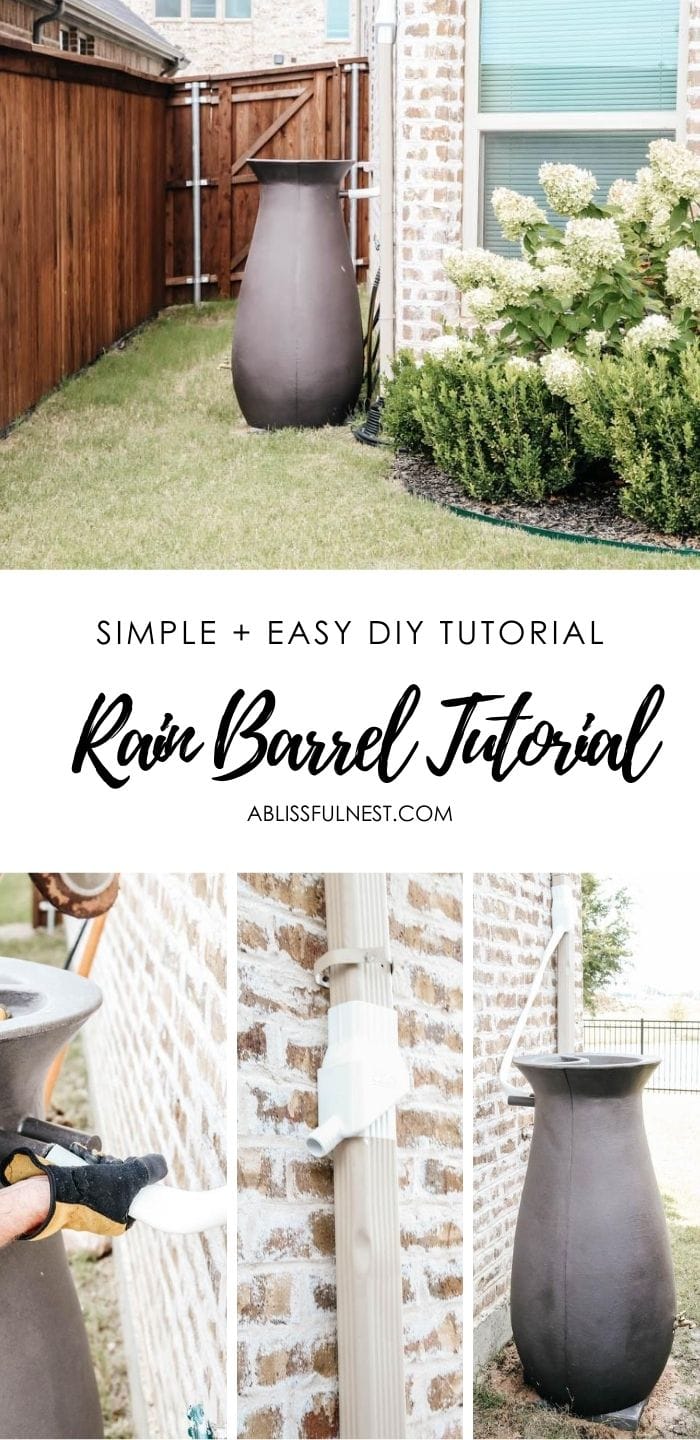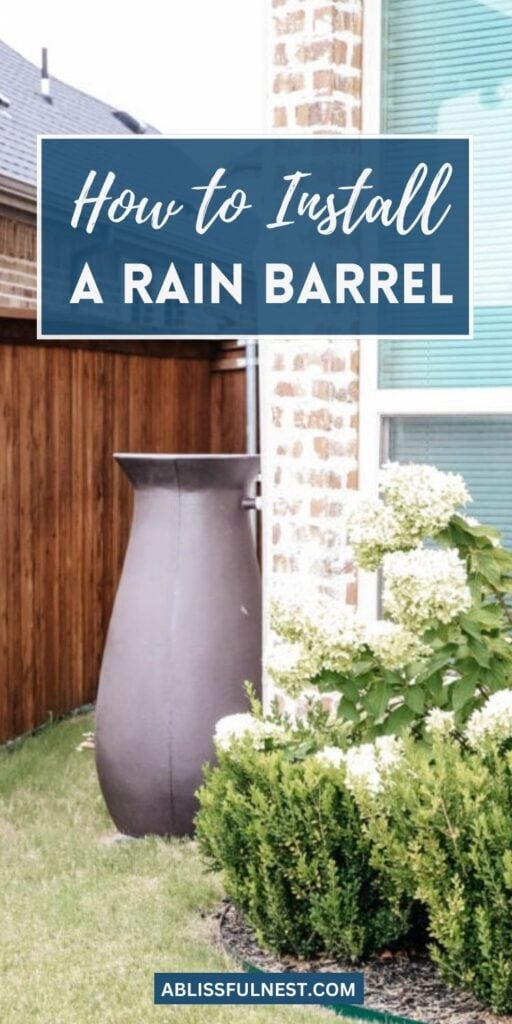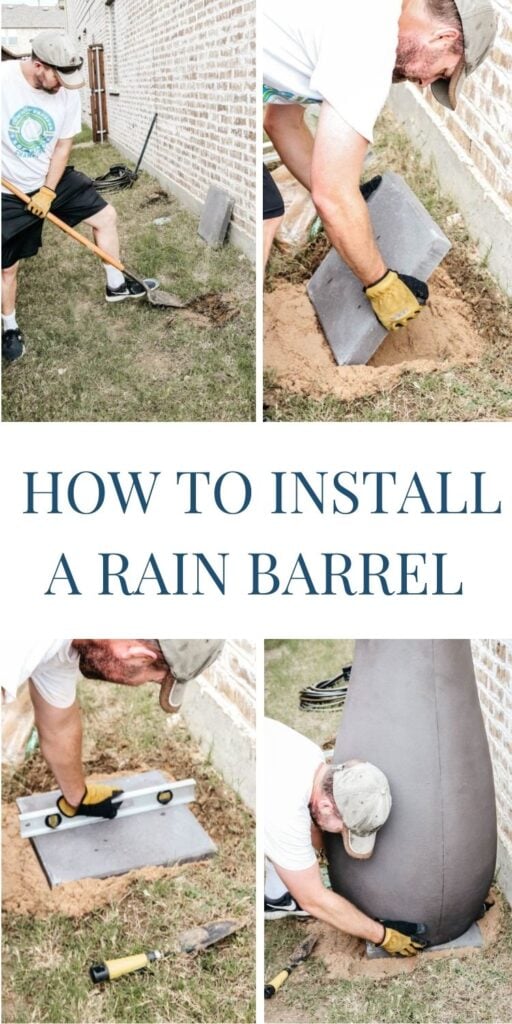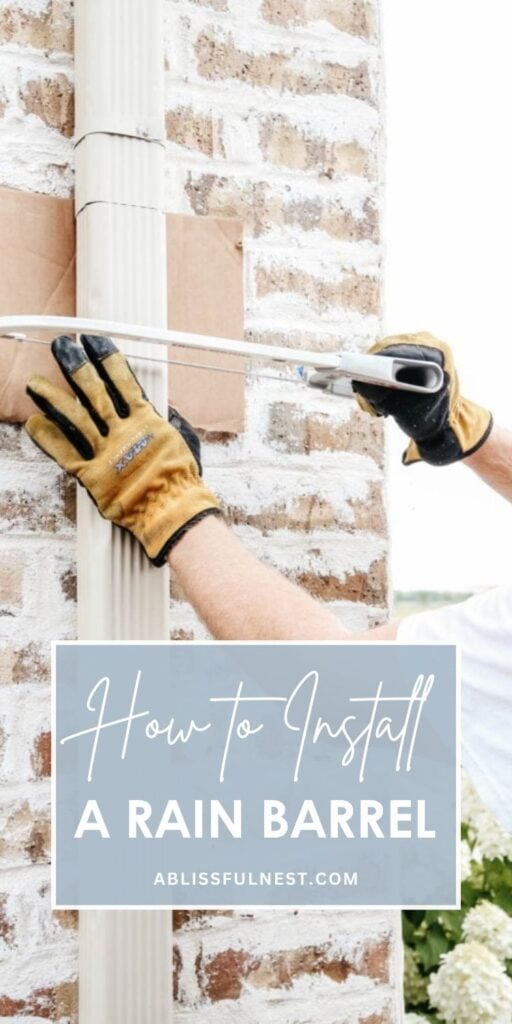Install a rain barrel system for your home to help conserve water and save money on your monthly water bill. A full detailed tutorial on how to install rain barrels and answers to commonly asked questions in regards to maintaining a system like this.
A few weeks back Bryan and I installed a rain barrel system for our house. We live in an area where water is super expensive and especially during the hotter months it is insanely high. We did this to help save some money and to be more mindful of our water supply.
We set out doing a lot of research on what was the best barrels to buy and all the parts needed before starting this project. Along with all this deep research came a lot of questions like how many rain barrels do we need, how do we connect them to the gutters, what kind of surface prep do we need to do, and so many more questions.
This post may contain affiliate links. As an Amazon Associate and a participant in other affiliate programs, I earn a commission on qualifying purchases at no additional cost to you.
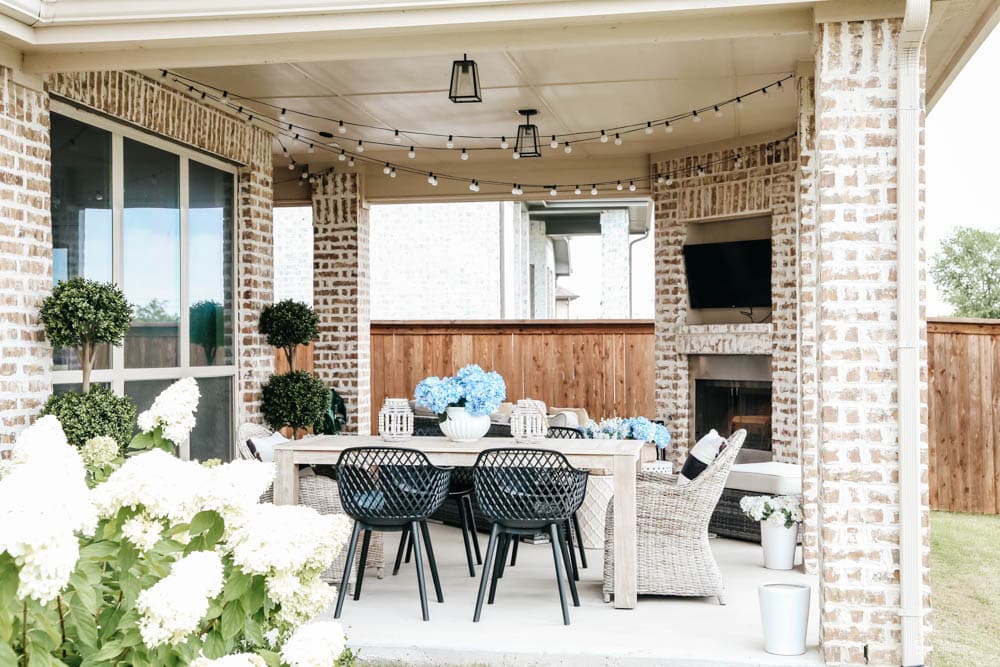
Why you should install a rain barrel system
But one of the biggest questions my husband asked me was why should we install rain barrels. Really I got onto the idea for needing rain barrels when I was complaining to my neighbor about how much our water bill was each month and how if I did not water out yard as much as I do, I was going to lose my landscaping that we so tirelessly installed the year before.
To be really blunt our water bill during the hot months pushes close to $500. It’s insane. What I love about rain barrels is that they capture water from your roof and collect it into a barrel for later use, which reduces the amount of city water used to upkeep your yard.
This post contains some affiliate links for your convenience. Click here to read my full disclosure policy.
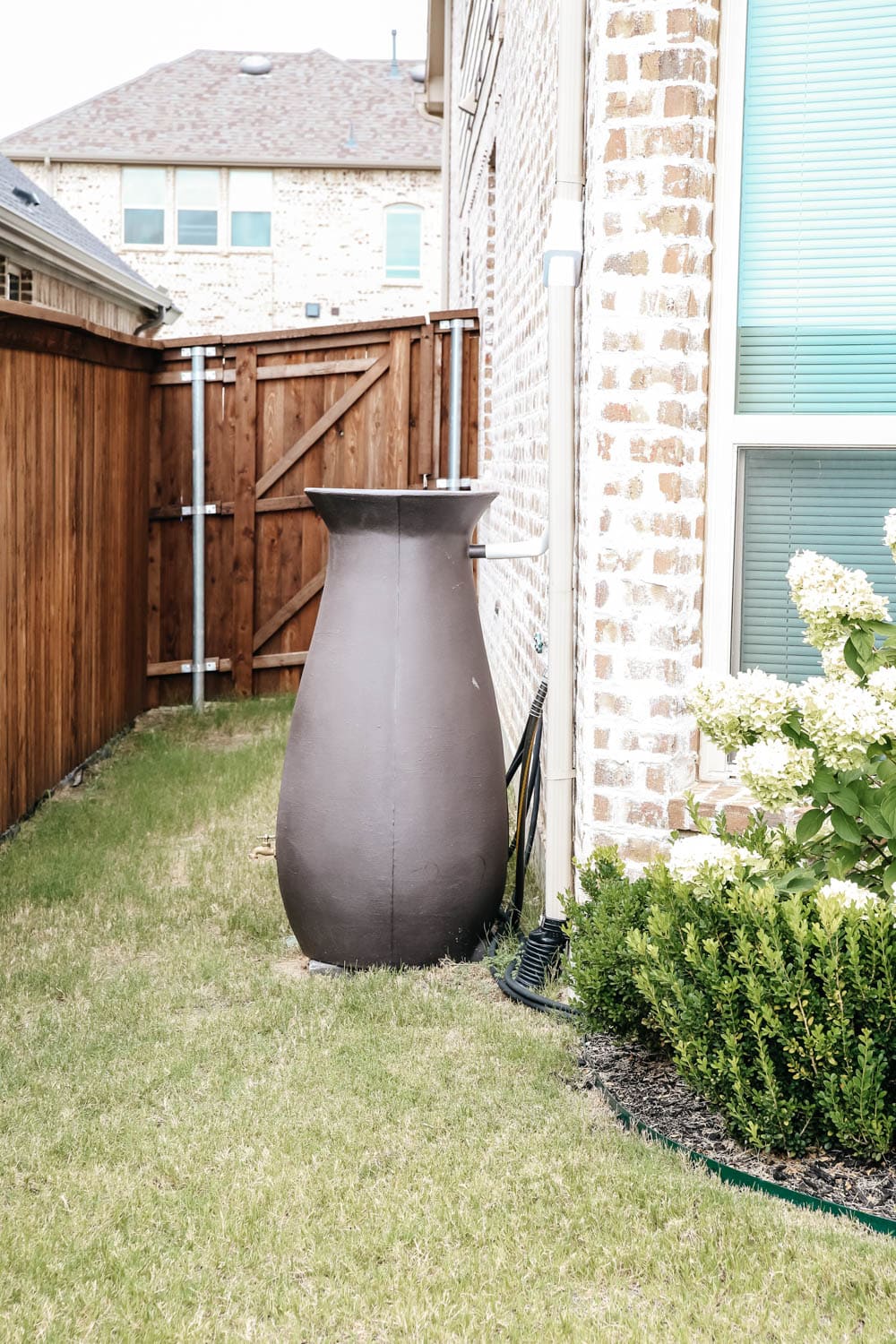
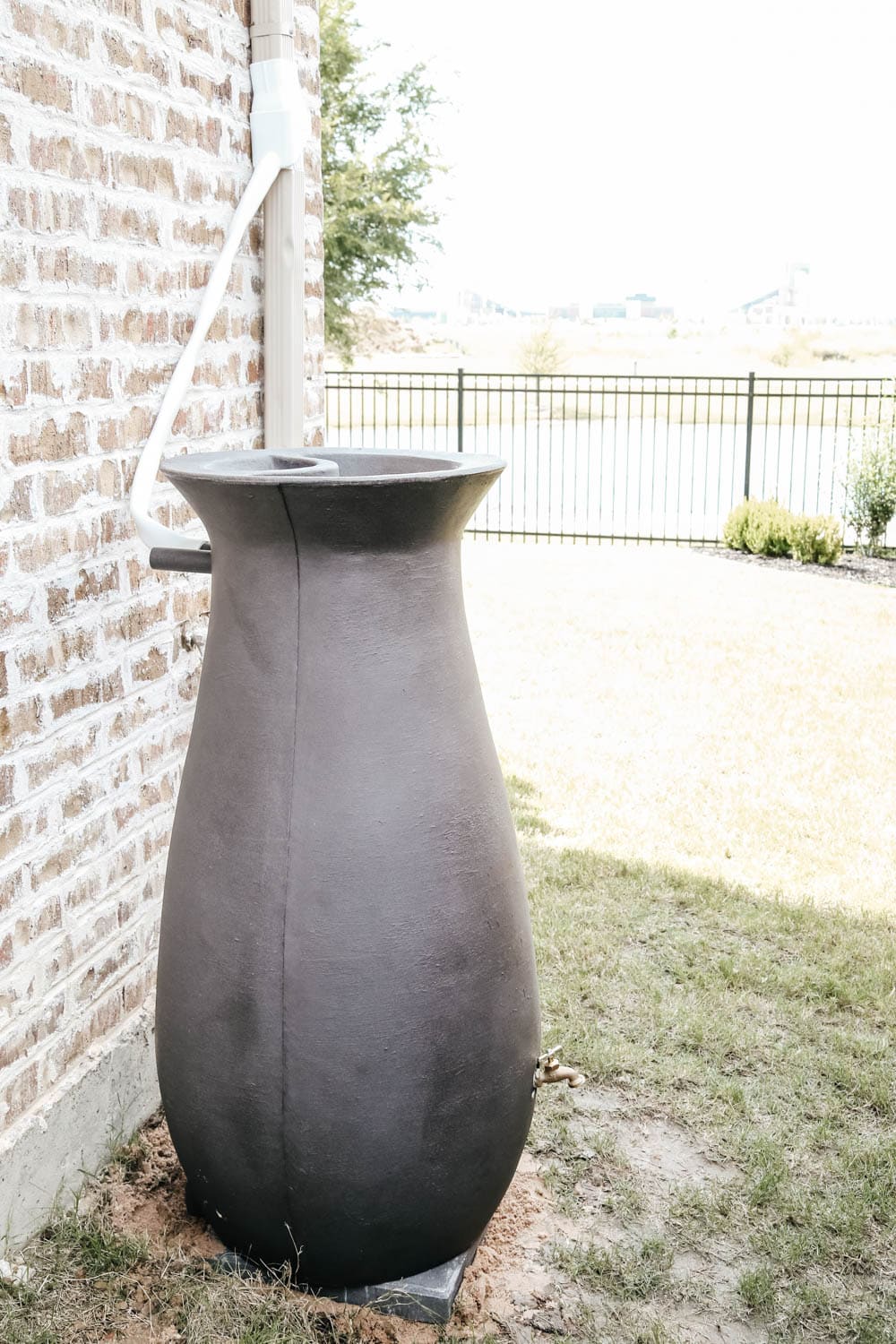
How To Install A Rain Barrel Step-By-Step Guide:
Simple rain barrel set up
Setting up rain barrels is easier than you think. We researched and went through so many websites and tutorials all to boil down to the kind of downspout you get is EVERYTHING. More on that soon. First here are all the materials you need to start.
Materials Needed to Install Rain Barrels:
- Rain Barrels
- Diverter
- Pavers (we used 24×24)
- Sand
- Shovel
- Saw
- Measuring Tape
- Level
- Pen
- Piece of Cardboard
Tutorial Steps for Installing Rain Barrels:
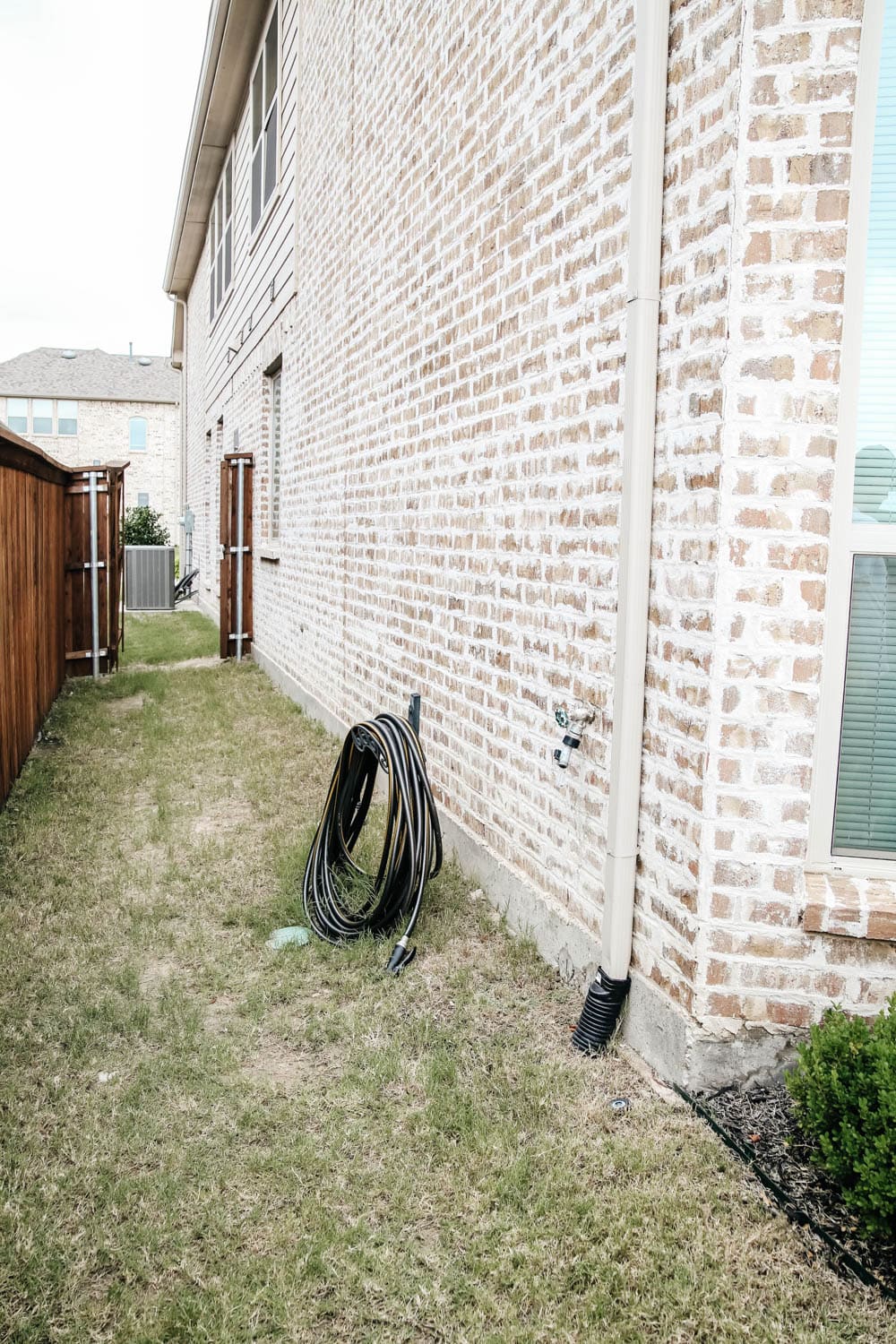
Step 1: First, start with figuring out where to place your rain barrels.
If you are installing more than one rain barrel, decide if you would like to attach them to each other or spread them out around the perimeter of your house. We decided to have one towards the front of our home and one on the backside. They both have different levels of our roof that drain into each to spread out the water disbursement between the two.
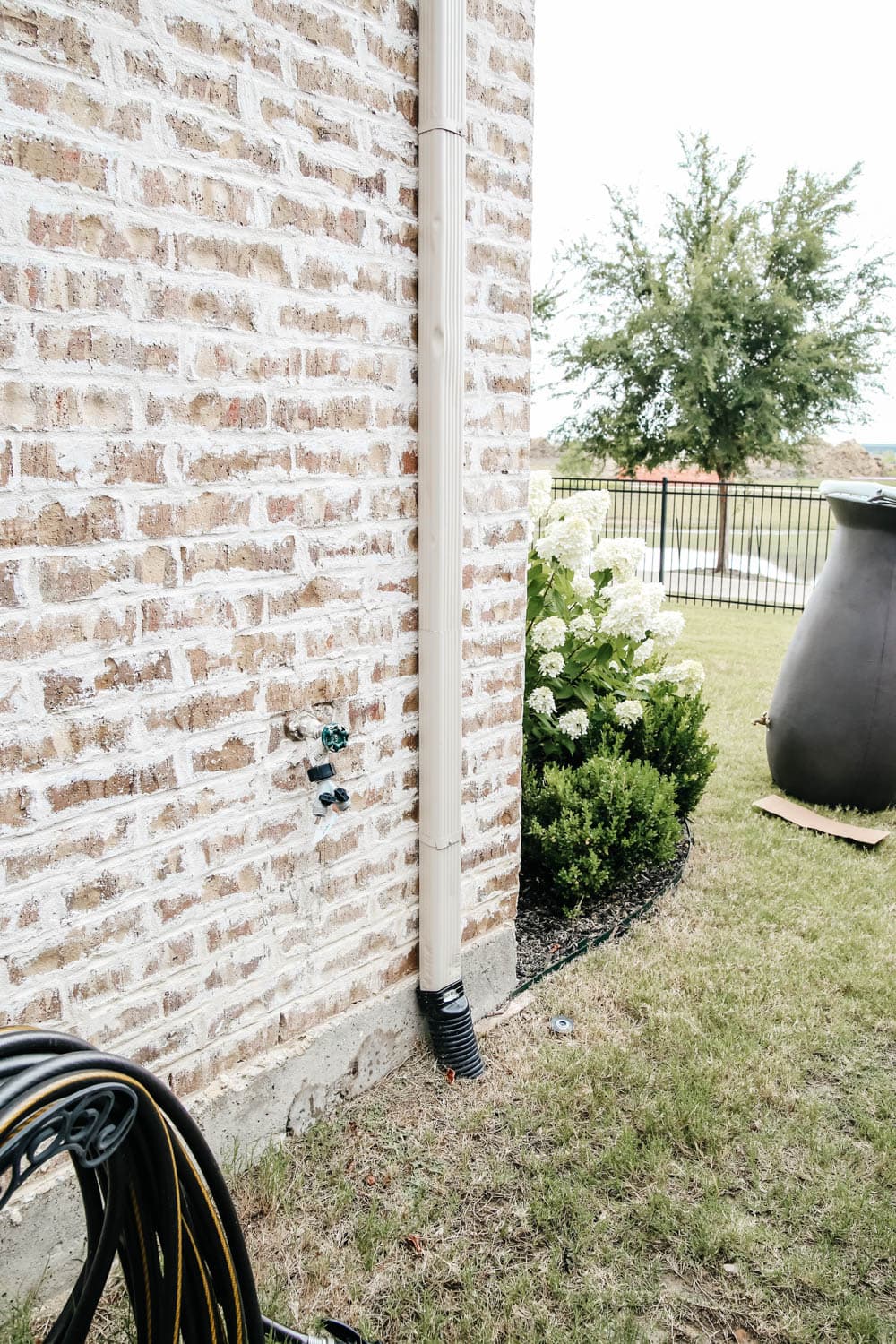
Step 2: Remove grass and dirt for paver.
Dig out a space slightly bigger than your paver (depending on the size you get- we used a 24×24) to create a flat space for your paver to sit on top of. It doesn’t need to be perfectly level at this point but flat enough so your paver is not slopped.
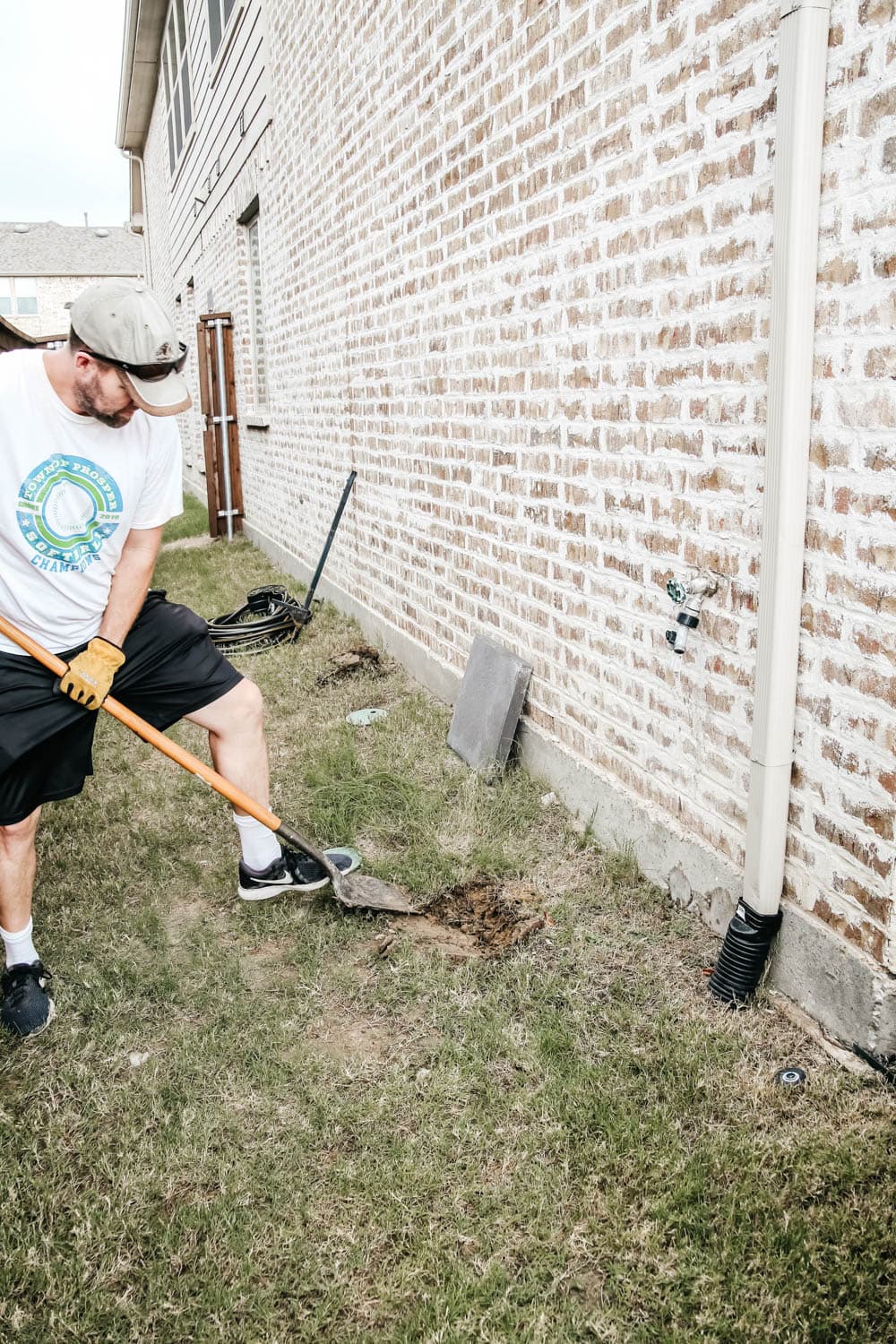
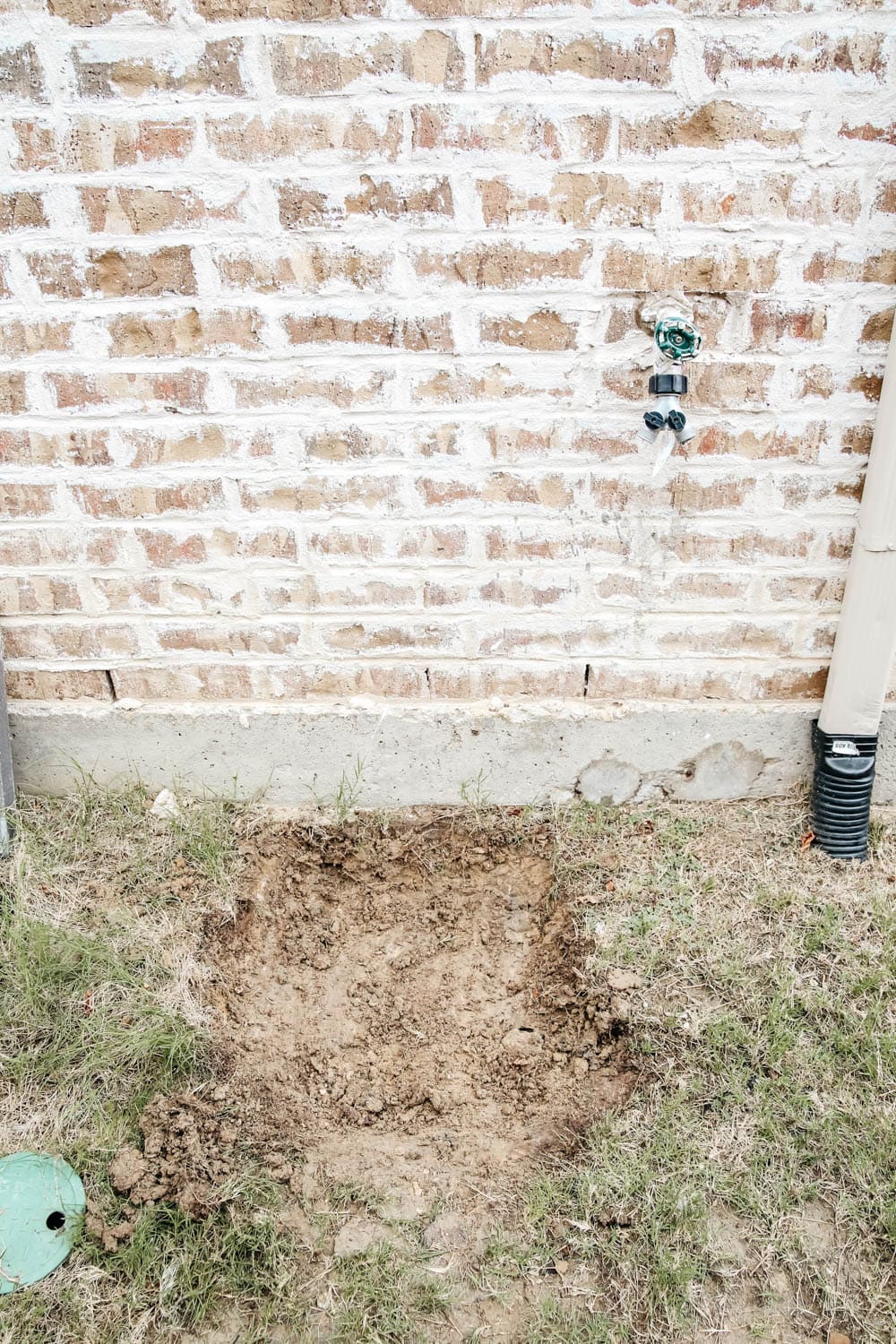
Step 3: Lay the sand
Lay sand on top of the area you just dug out. Use 1-2 inches of sand and create a nice smooth layer. The sand is what is going to help the paver lay nice and flat. Smooth out the sand so it is flat and use a level to check to make sure it is fairly level at this point.
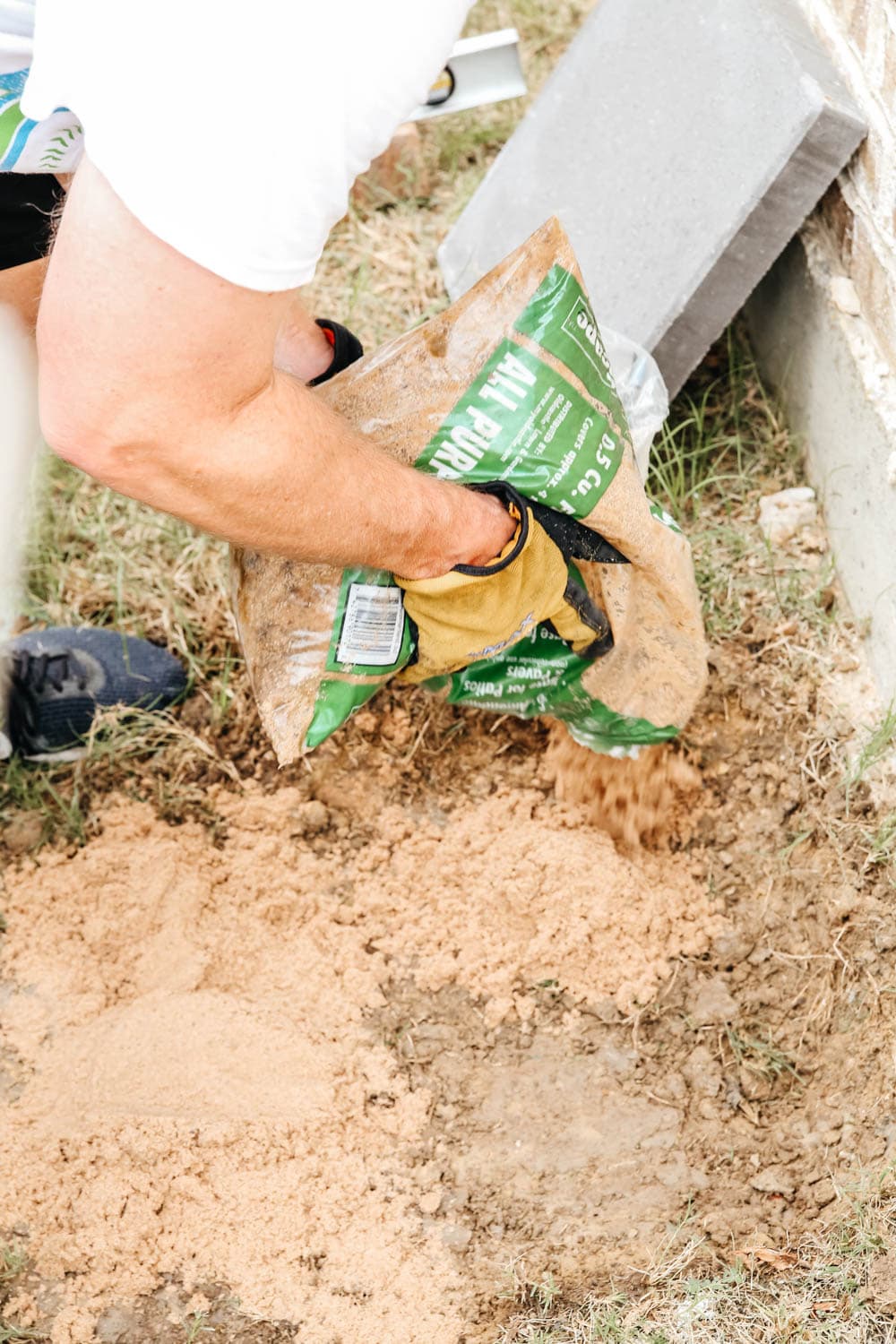

Step 4: Lay your paver
Next, lay your paver down on top of your smoothed out sand. Pack it down real good. You will see some sand ooze out of the sides and this is just fine. Use your level and now is when you want to get it nice and flat. If you are having trouble getting it to level out, you can either use a mallet and pound down the spots that are sticking up OR remove your paver and add more sand.
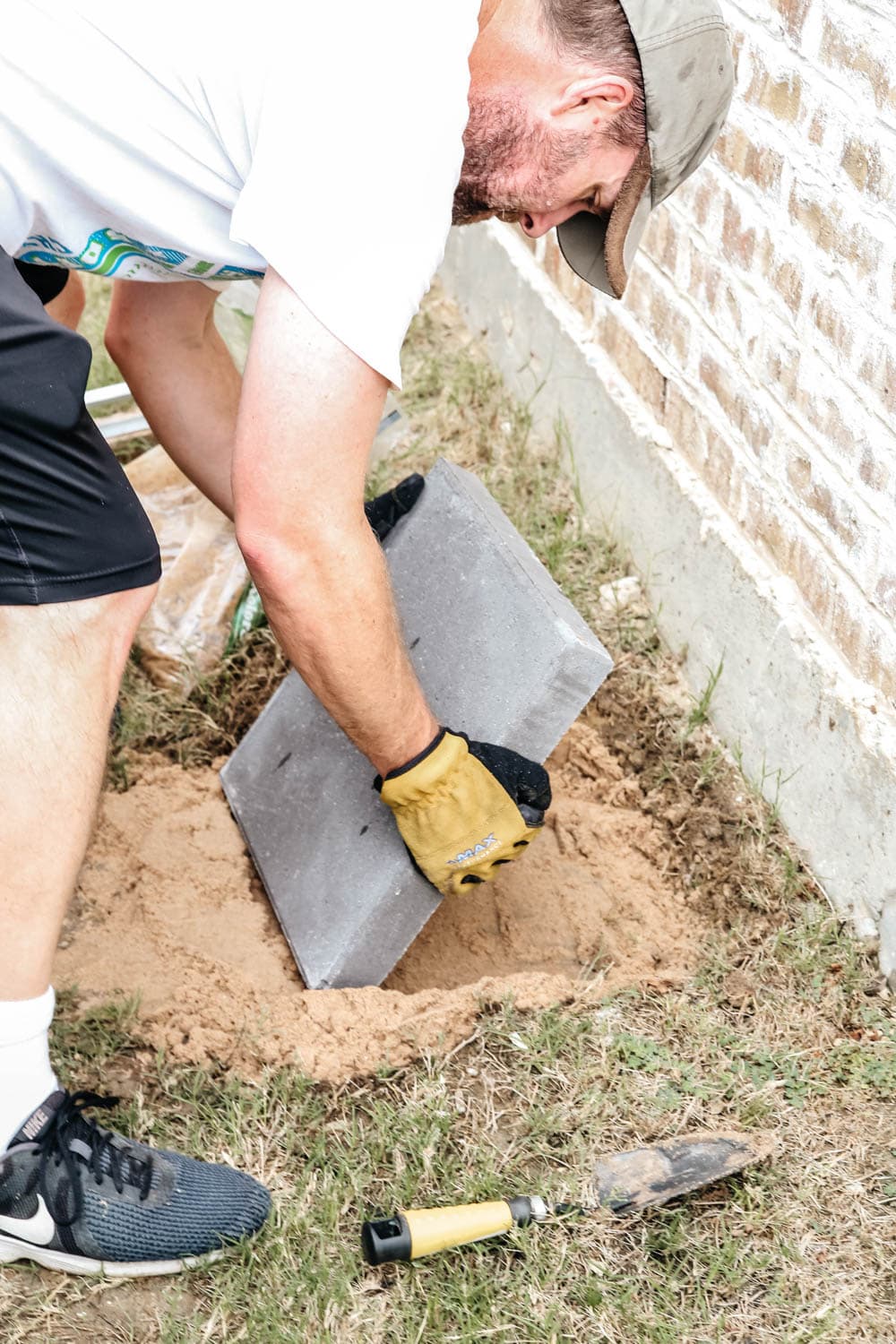
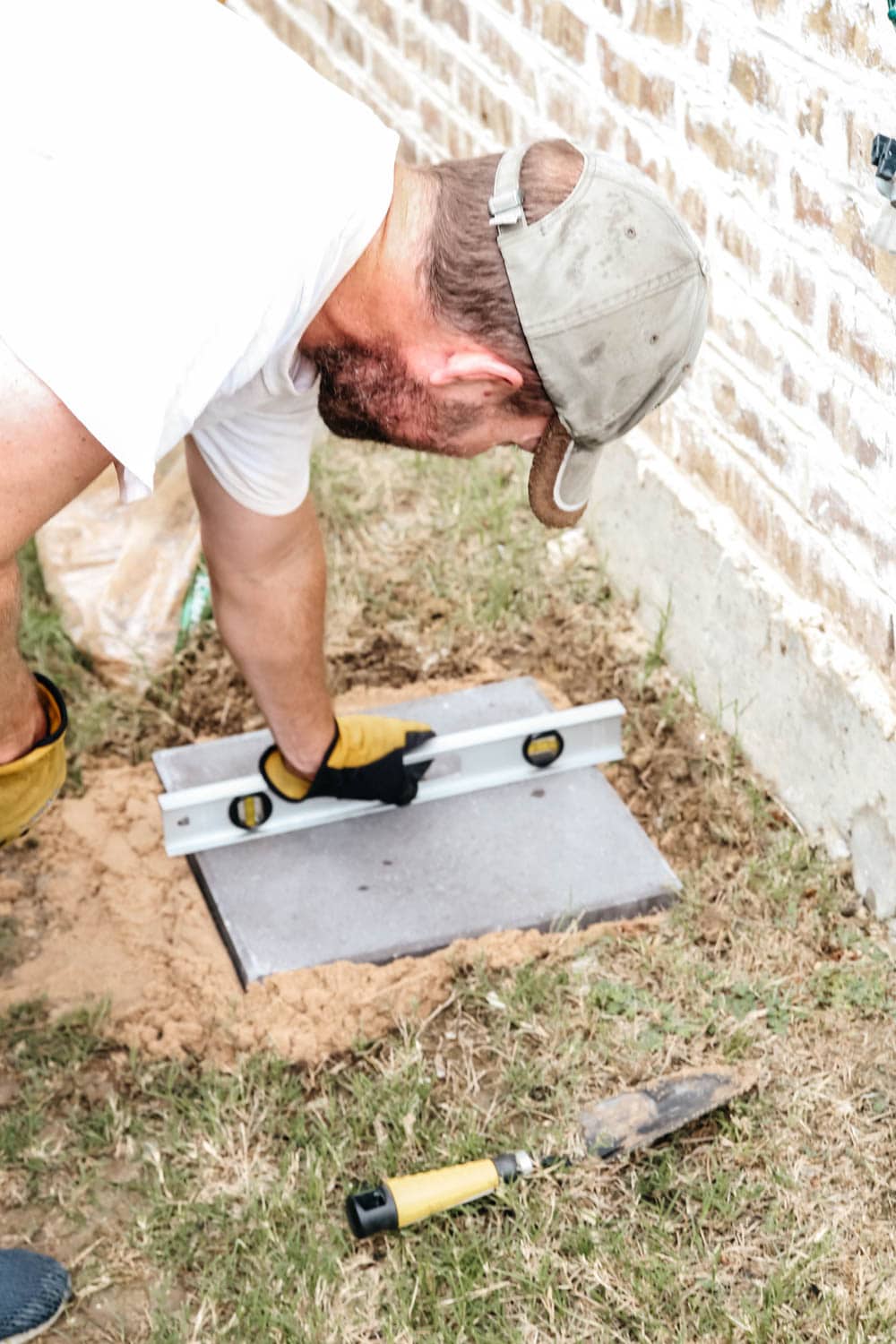
Once your paver is level, now it’s time to decide if you need your rain barrel raised up or not.
Does a rain barrel need to be elevated
This is going to totally be up to you. If you plan to just use a hose with the spigot on the rain barrel then you may not see a need to raise it. But if you would like to use a watering can or want more water pressure from the barrel, then yes you should raise it up at least 24″ off the ground.
How to raise a rain barrel
There are a couple of different ways to raise a rain barrel. If you have some bricks or cinder blocks then you can add them on top of your paver. I actually really like this wooden stand and this resin basin. After you have done the steps above to create a nice flat surface, then you can easily place one of these right on top of the paver before you put the rain barrel down.
Step 5: Place your rain barrel onto your paver
Get your rain barrel into the position you are going to want it in. Decide what direction you want the spigot to go and make sure the drain on the back has room to be opened to let water out. This is also typically where you would join using tubing another barrel. So make sure there is room to access this for in the future if you want to add another one.
Would you like to save this post?
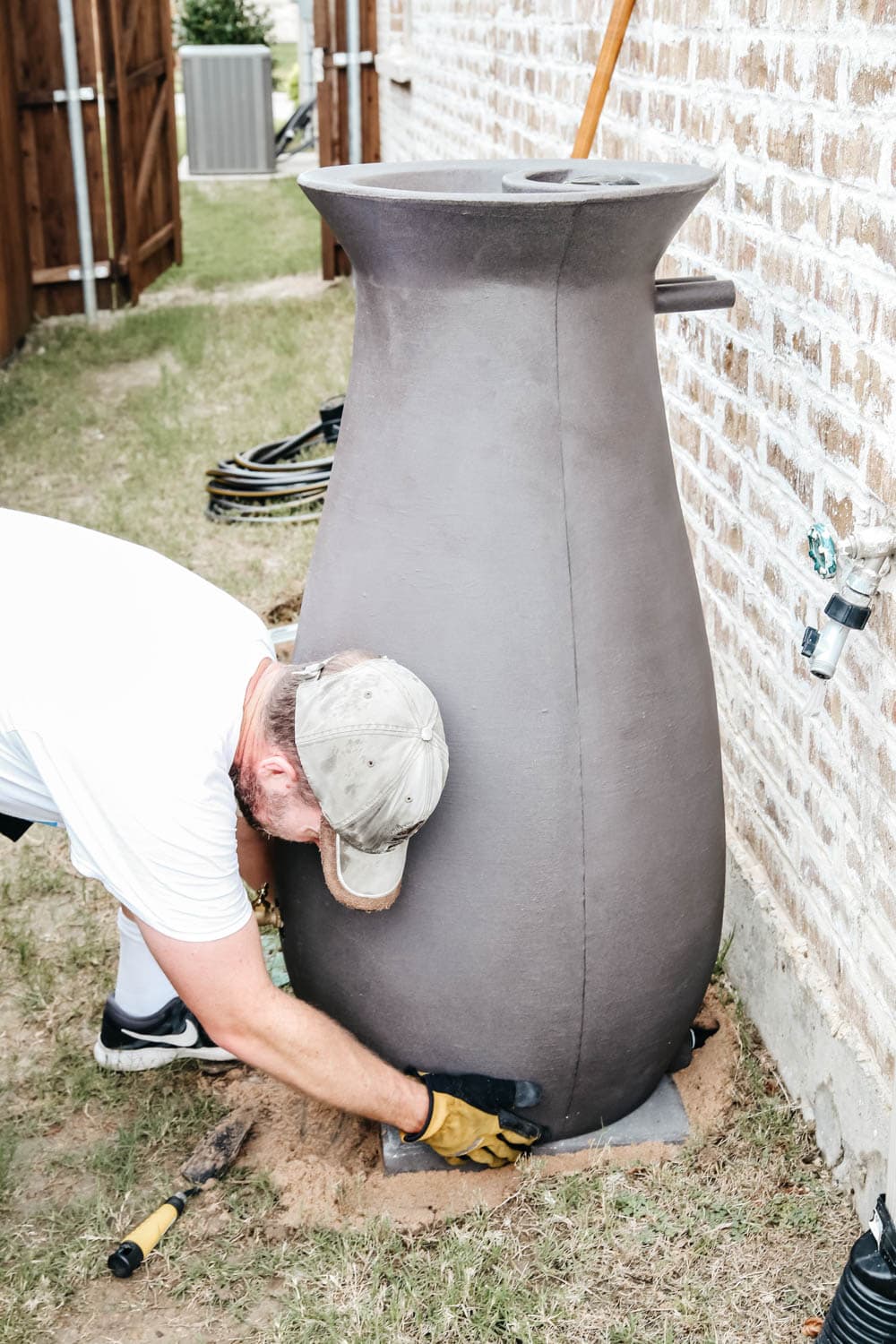
How to attach a downspout to a rain barrel
Step 6: Mark the placement for the diverter on the downspout and cut the downspout.
As per the instructions of the diverter, it needs to be placed 24 inches above the rain barrel. Use the measuring tape and a pen to mark the section of the downspout that will need to be cut.
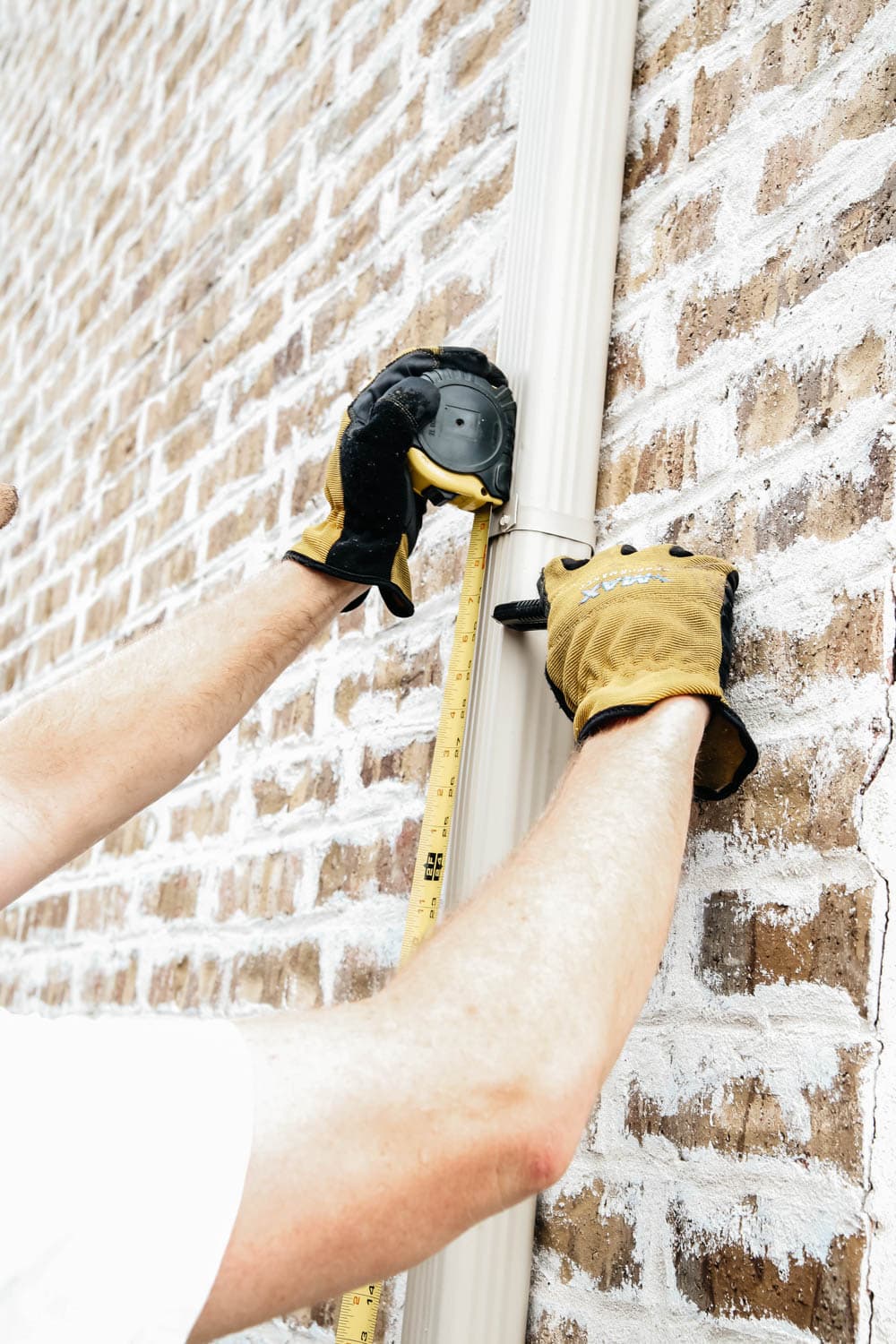
Use a piece of cardboard and slide it between the house and the back of the downspout. This will protect the siding of the house. Use a saw and cut the marked sections of the downspout. You will have a six-inch gap in the downspout when you are done.
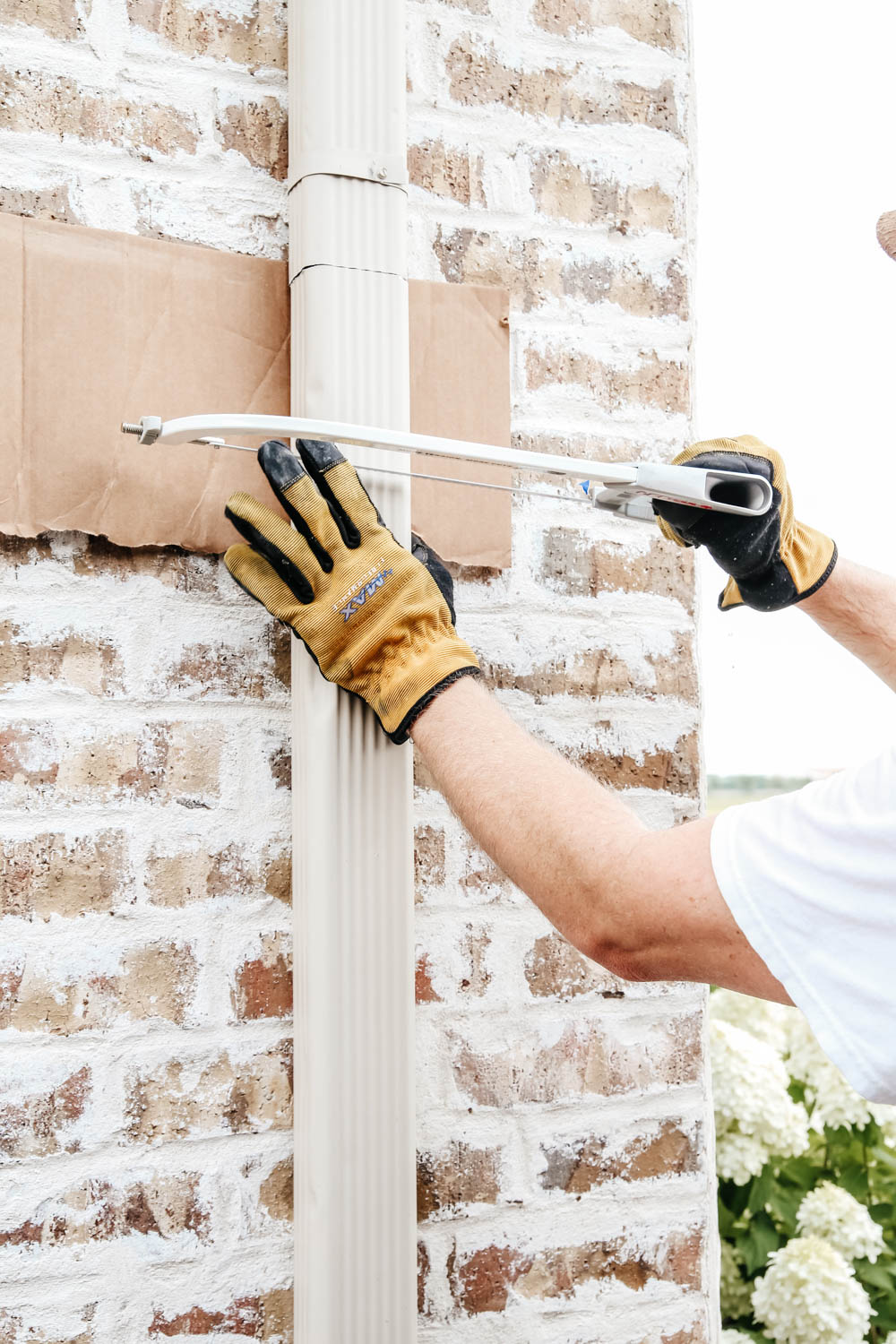
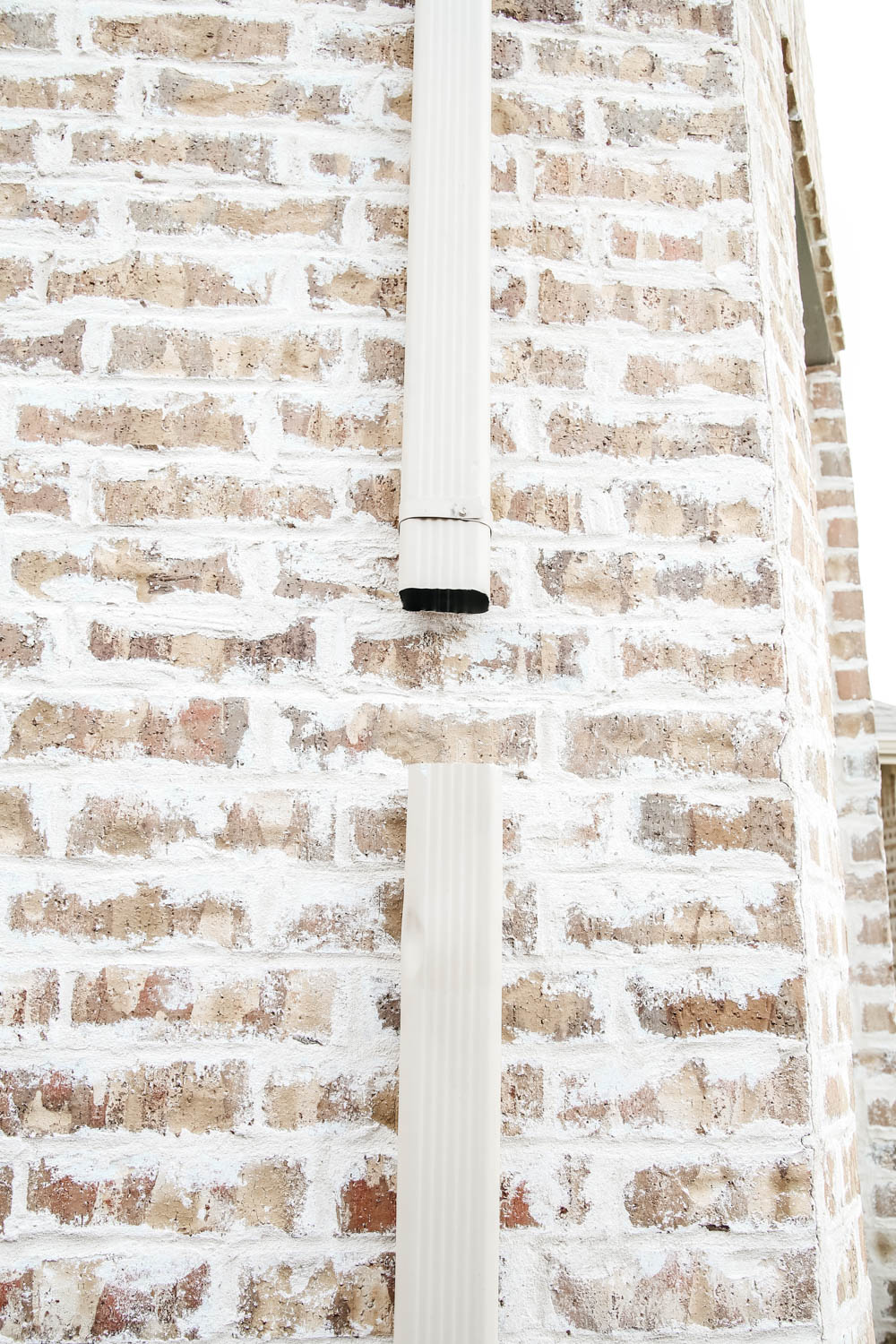
Step 7: Slide the diverter onto the downspout.
The diverter comes apart in the center. Pull the two pieces apart and slide on the top part to the downspout. Then slide the bottom part on to the bottom of the downspout and connect the 2 pieces. You should have a snug fit and it should snap right into place.
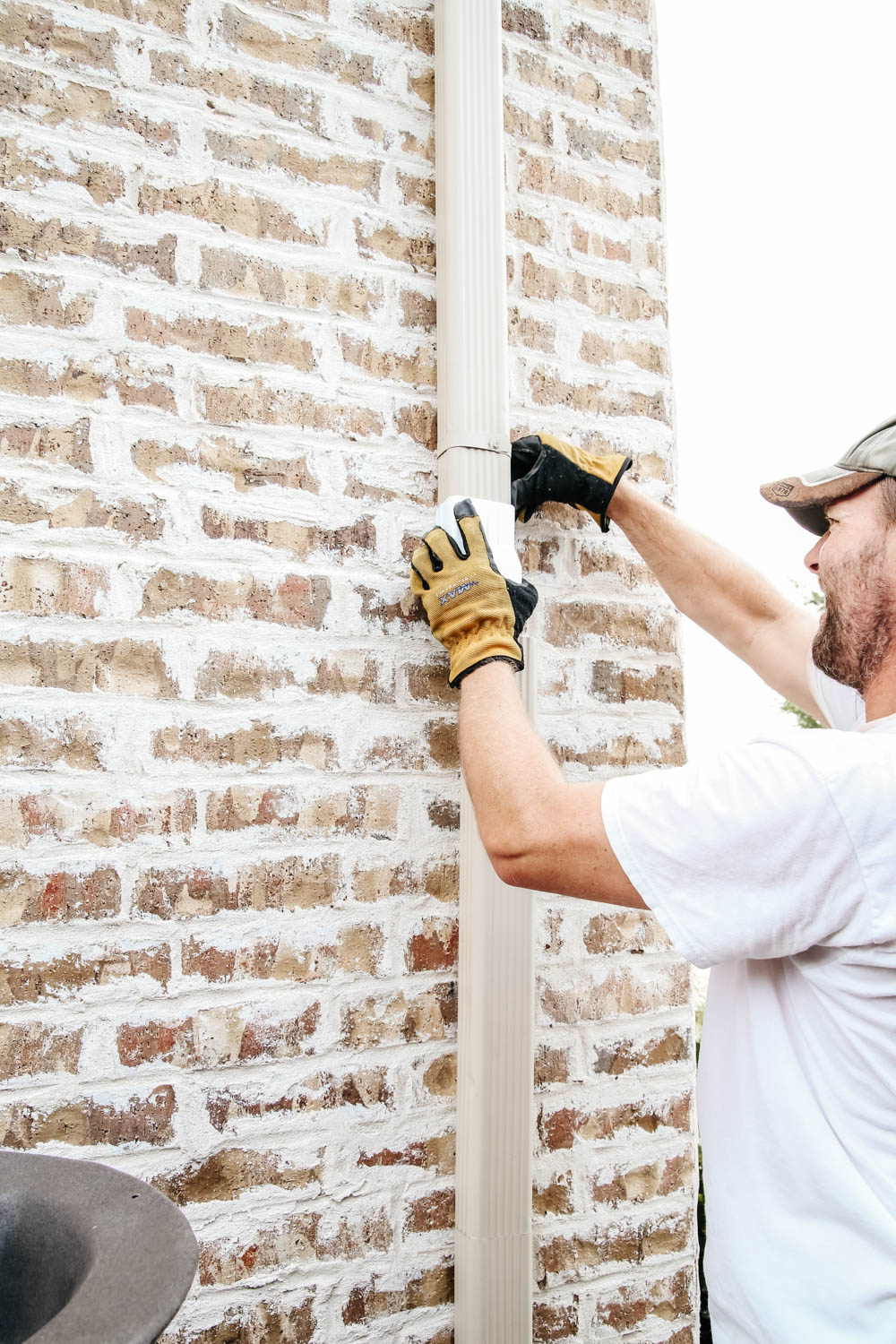
More Outdoor Decorating Ideas + Inspiration
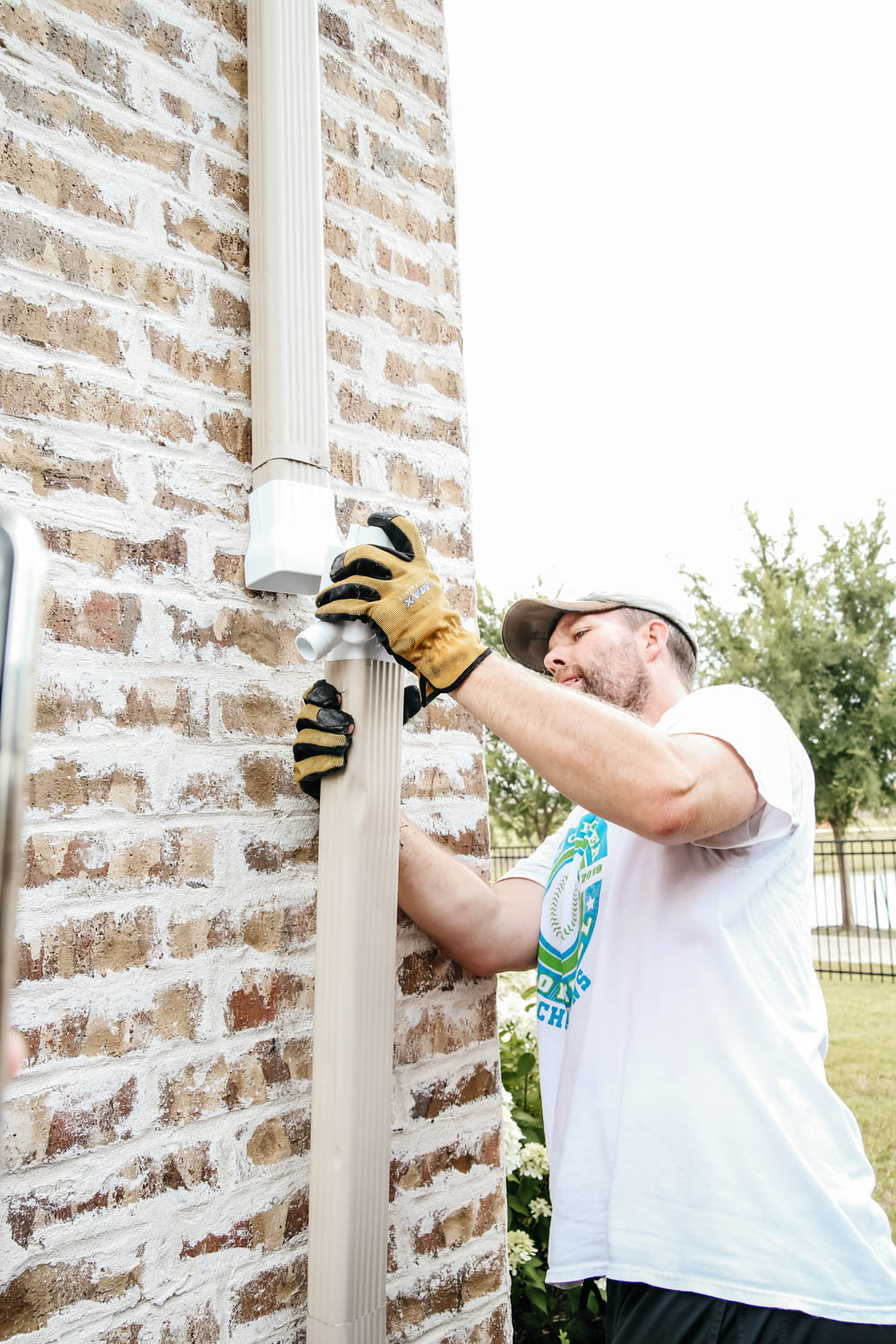
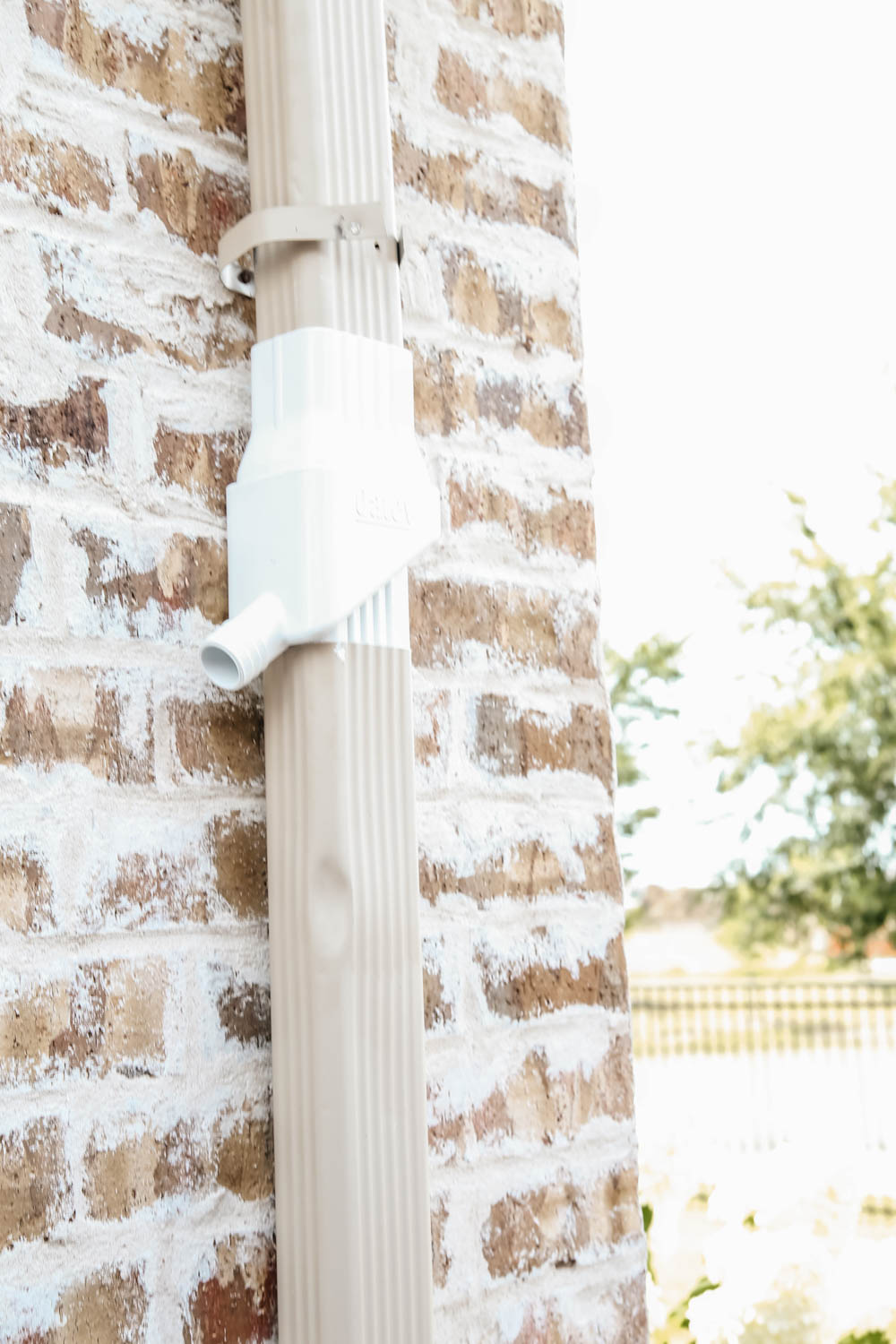
Step 8: Attach the hose to the diverter and to the rain barrel.
Lastly, connect the hose to the bottom of the diverter and to the back of the rain barrel. Make sure there is not a kink and the hose is fully extended so the water can run through without it being obstructed.
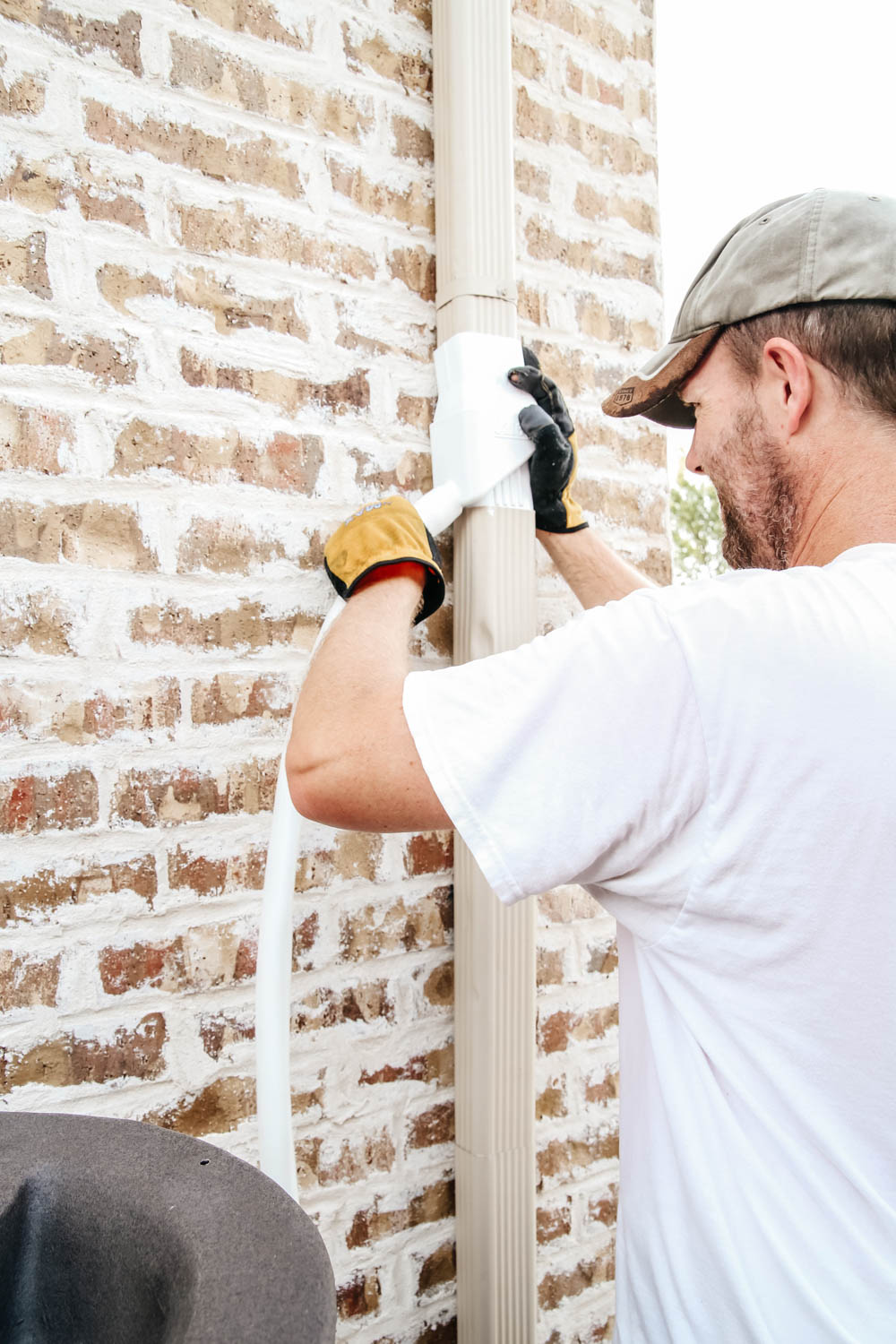
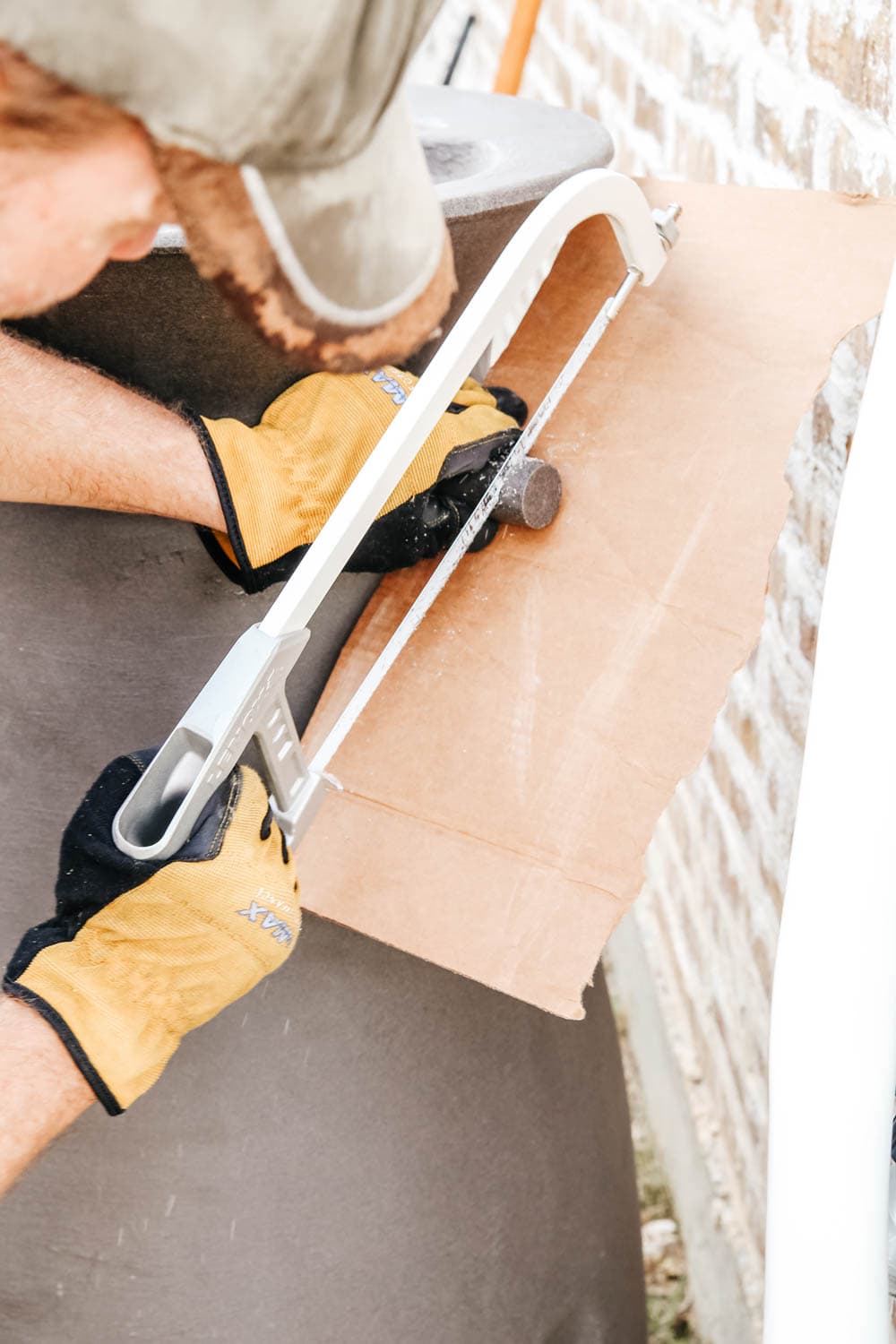
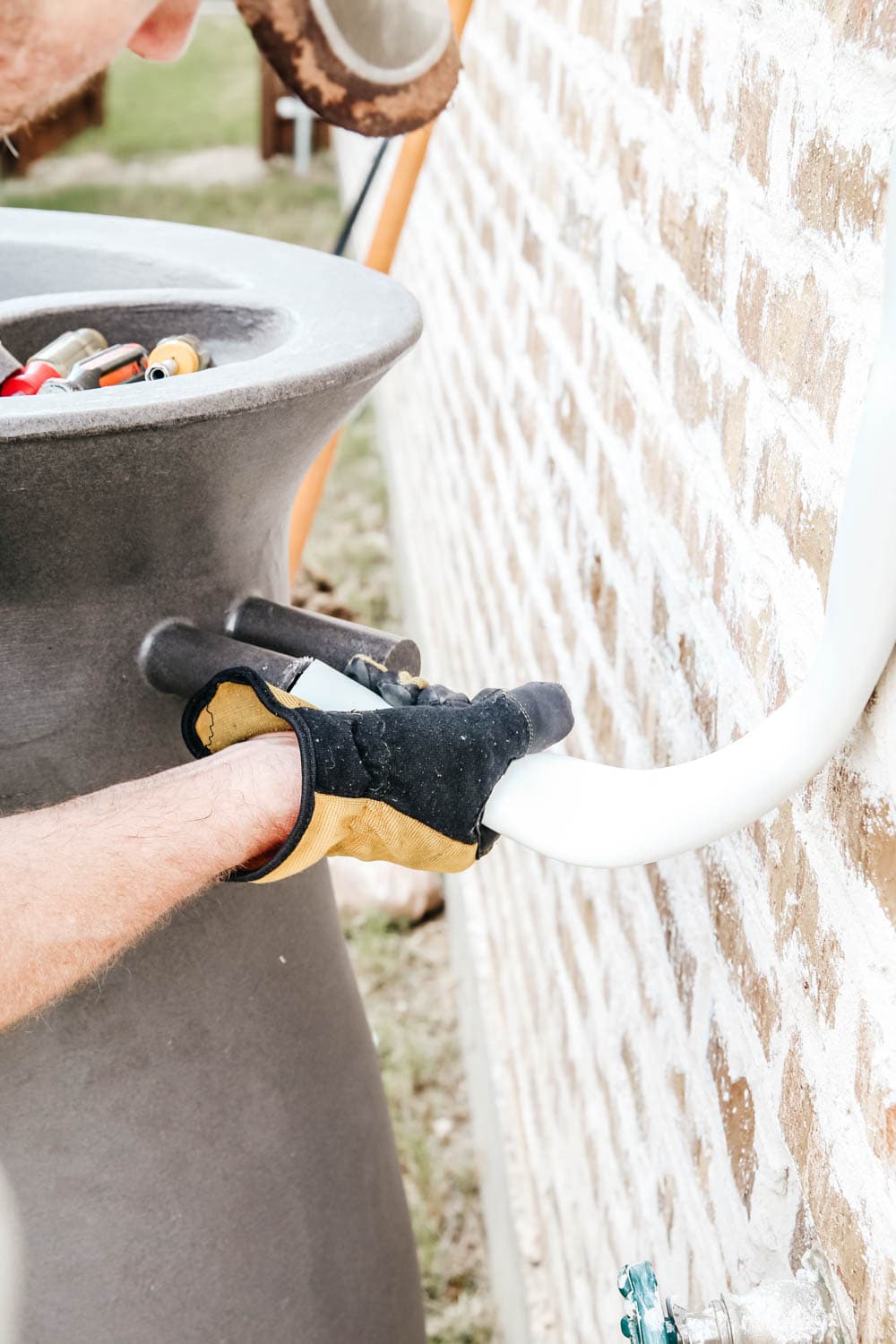
And that’s it friends! Really the whole thing took us 20-30 minutes from beginning to end.
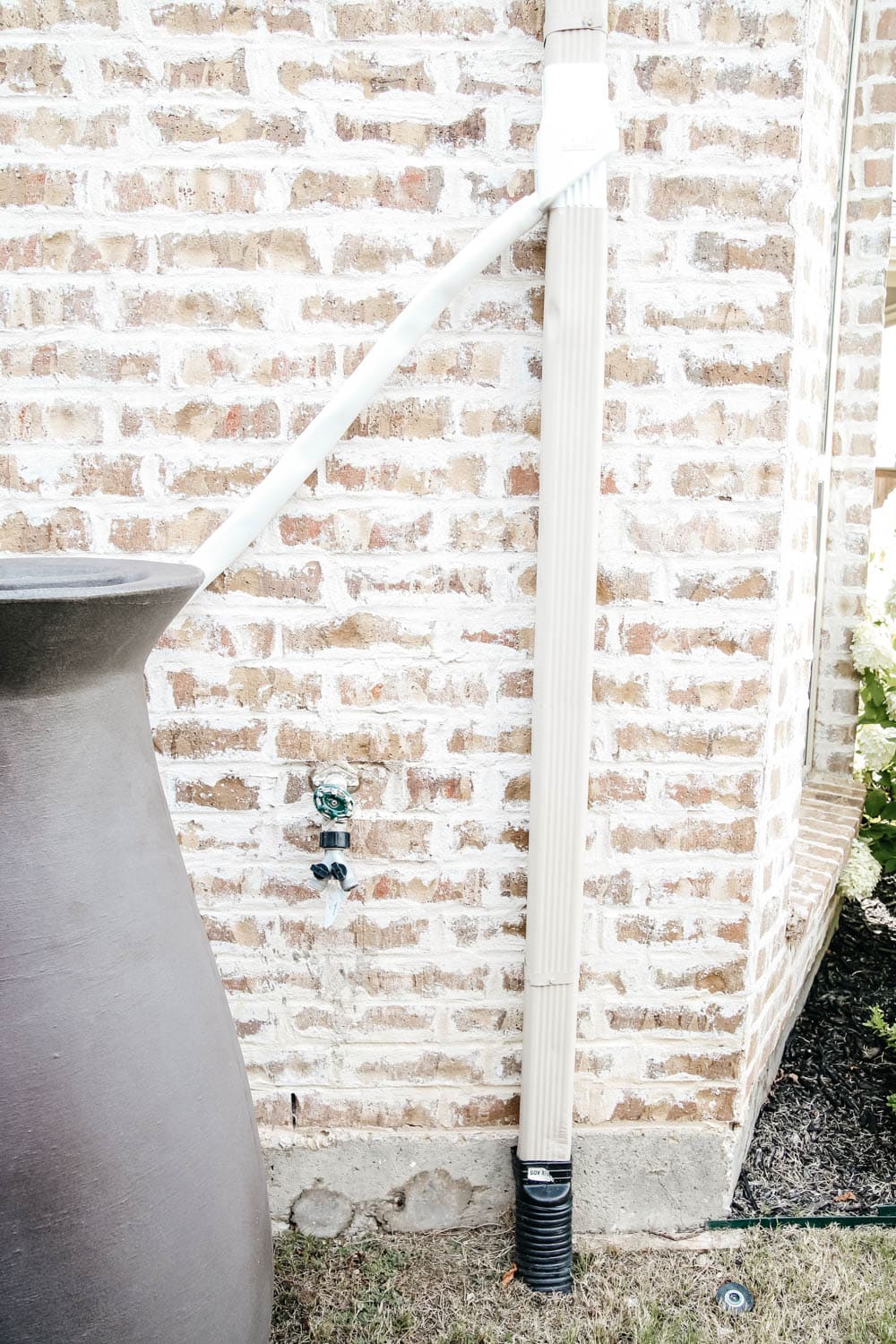
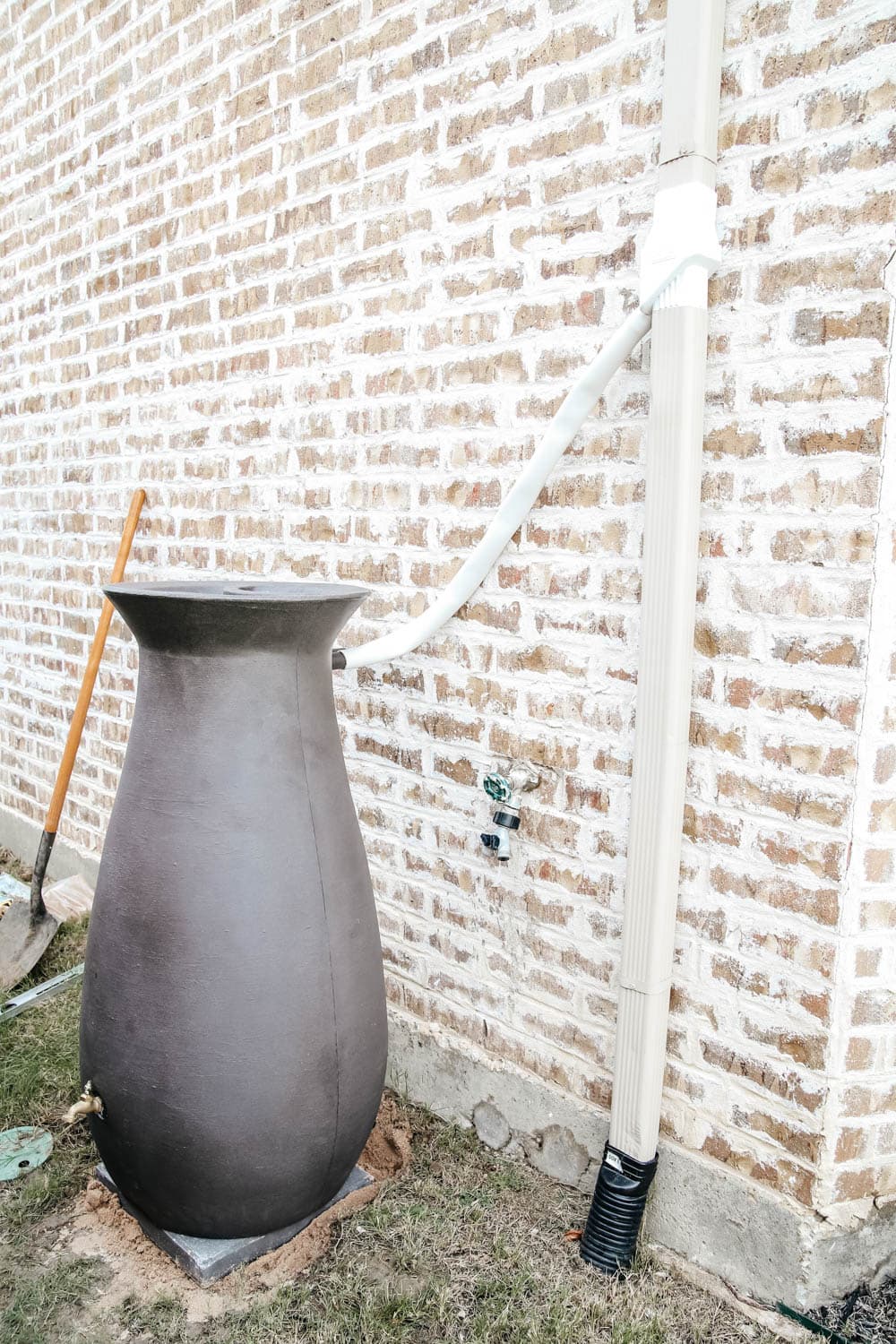
Commonly Asked Questions:
Can you attach a hose to a rain barrel?
You can definitely attach a hose to a rain barrel. You just need to do it towards the bottom of the barrel and with a spigot. Most rain barrels already come with them but you can get a spigot that has a universal fit.
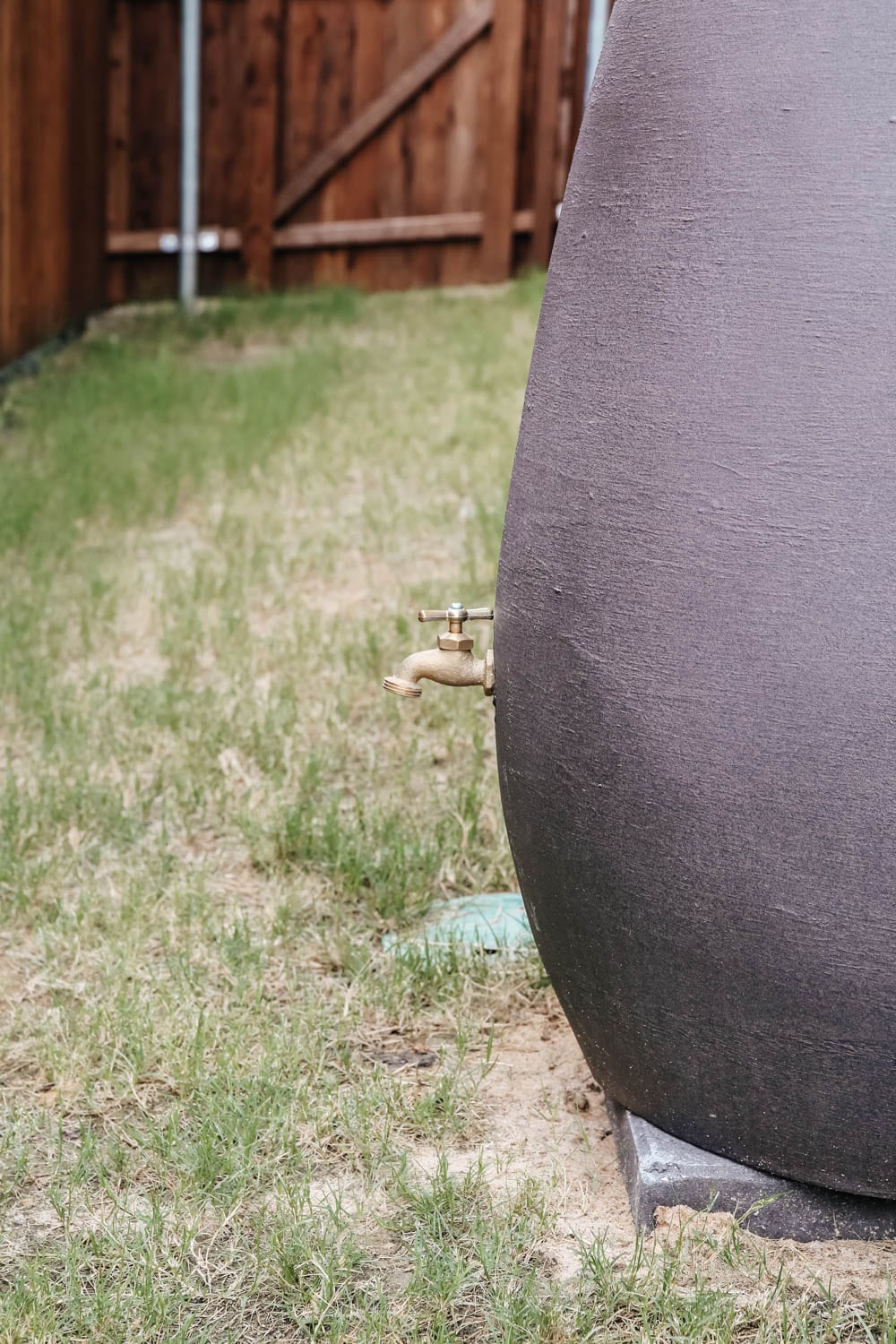
How quickly do rain barrels fill up?
How quickly your rain barrel fills up will depend on how much it rains where you are but I love to use this from the Rain Barrel Man on how to generally calculate this?
“To calculate how much water your roof will produce, multiply the square footage of your roof by 600 and divide by 1000. As for harvesting the rainwater, that depends on how many downspouts you connect to and how large a system you have room for under each one.”
Do rain barrels attract mosquitoes?
If you purchase a good rain barrel then there should be a mesh top on the top of the barrel so they can’t get in. If not you will want to add a mesh lining that’s about 1/16 of an inch to cover any open areas to your rainwater. You can easily find mesh at your local hardware store to do this.
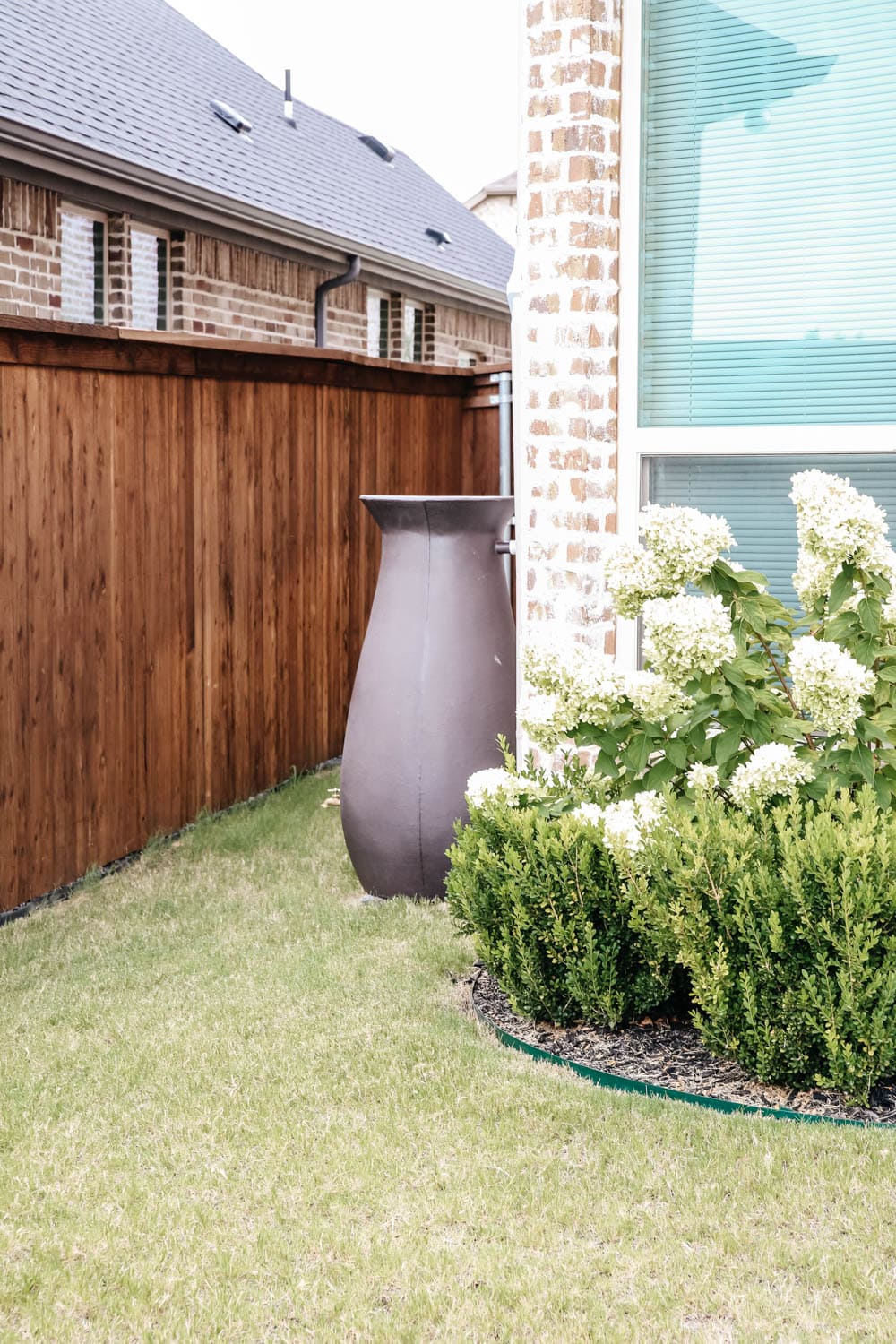
How often should you empty your rain barrel?
You should empty your rain barrel before winter comes and freezing weather. You don’t want your barrels to crack from the expanding and contracting from frozen water.
Also, it is good to empty it after each storm season. This will help prevent bacteria from growing. Use a long scrub brush and an even mixture of water and bleach to scrub the inside thoroughly. A good time of year to do this is right after summer and before the fall rain season. You most likely will not be using your rain barrels from fall through the winter and should have the diverter off to redirect your gutter water.
Pin our image below to save it for later!
